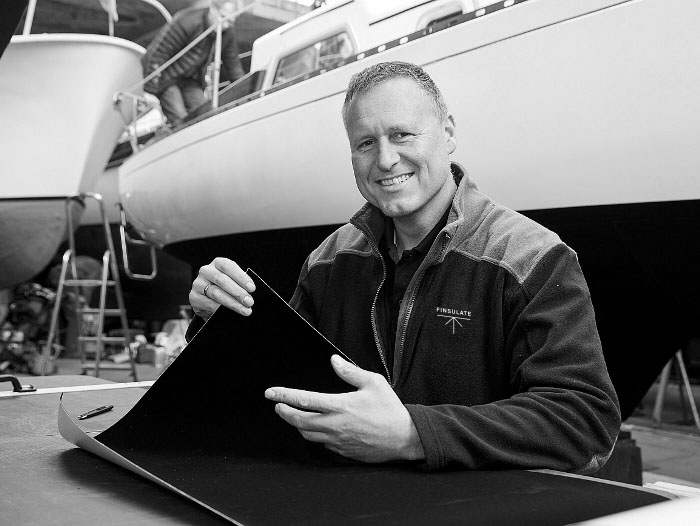
In May 2021, the Communication on Sustainable Blue Economy (SBE) was adopted as an integral part of the European Green Deal. The Blue Economy focuses on the sustainable use and management of oceans and coastal resources. Its goals include supporting economic growth, improving living conditions, and promoting ocean health.
The Blue Economy aims to balance fisheries, tourism, energy, and shipping while developing and encouraging innovative ways to protect ecosystems, biodiversity, and underwater habitats.
Key Aspects of the Blue Economy
1. Sustainable Resource Use: The Blue Economy promotes responsible resource extraction, such as sustainable fishing, to prevent overfishing and ensure fish populations remain viable for future generations. It also aims to reduce the environmental impact of offshore drilling and seabed mining activities.
2. Marine Protection: A core component of the Blue Economy is protecting marine ecosystems, which are vital for biodiversity, climate regulation, and human livelihoods. Marine Protected Areas (MPAs), habitat restoration, and policies to reduce pollution (e.g., plastic waste, chemical runoff) are common initiatives within this framework.
3. Economic Growth and Employment: A vital objective of the Blue Economy is to create sustainable economic opportunities and jobs in ocean-based sectors. This includes expanding ecotourism, renewable energy from offshore wind and wave power, and sustainable aquaculture.
4. Climate Change Resilience: Oceans are crucial in regulating Earth’s climate, absorbing around 25% of global CO₂ emissions and heat. The Blue Economy advocates practices that mitigate the impacts of ocean warming, acidification, and sea level rise, which threaten coastlines and marine biodiversity.
5. Innovation and Technology: The Blue Economy encourages technological advancements to improve the efficiency and sustainability of ocean industries. Innovations in clean energy, pollution monitoring, sustainable aquaculture, and even satellite technology for ocean mapping are essential to understanding better and protecting ocean ecosystems.
6. Social Equality and Livelihoods: The Blue Economy aims to support communities that rely on the ocean for their livelihoods, particularly in developing regions where communities depend heavily on fishing and marine resources. Fair access to resources, education, and sustainable employment are crucial to this approach.

Fish cages in the ocean for aquaculture, emphasizing sustainable seafood practices
Examples of Blue Economy Activities
– Renewable Ocean Energy: Offshore wind, wave, and tidal energy are renewable resources that can reduce dependence on fossil fuels.
– Sustainable Fishing and Aquaculture: Responsible fishing practices help maintain fish populations, and sustainable aquaculture provides an alternative to overfishing.
– Marine Tourism: Ecotourism initiatives, such as coral reef snorkelling with conservation support, create jobs and promote conservation.
– Blue Carbon Initiatives: Efforts to protect and restore coastal ecosystems (mangroves, seagrass) that absorb CO₂ from the atmosphere help combat climate change.
– Ocean Cleanup and Waste Management: Reducing plastic waste and pollutants such as biocides and microplastics in oceans protects marine life and promotes a healthier marine ecosystem.
Importance of the Blue Economy
Oceans cover more than 70% of the Earth’s surface and support the livelihoods of hundreds of millions of people, especially in coastal communities. The Blue Economy represents a new approach to utilizing these resources while protecting ocean health, promoting resilience, and adapting to climate change.
As countries work toward sustainable development goals, the Blue Economy is increasingly seen as essential for achieving a sustainable future for both oceans and humanity.
Environmentally Friendly Antifouling Solution: Finsulate Comes at the Right Time
Marine fouling—the buildup of organisms like barnacles, algae, and mussels on submerged structures—presents a significant challenge for offshore renewable energy installations. It increases maintenance costs, reduces efficiency, and accelerates corrosion.
Finsulate, an innovative antifouling technology, offers an environmentally friendly solution that meets industry demands for long-lasting protection and sustainability.

The Challenge of Marine Fouling
Traditional antifouling coatings typically rely on biocides, which leak toxic chemicals into surrounding water to combat marine growth. This approach is problematic for several reasons:
1. Environmental Concerns: Biocide-based antifouling solutions are incompatible with sustainable and green energy production goals.
2. Limited Effectiveness: These coatings require continuous water movement to be effective, making them less suitable for static offshore structures.
3. Short Lifespan: The antifouling properties of biocide coatings diminish over time, requiring frequent reapplications.
Therefore, a sustainable, long-term antifouling solution is necessary to maintain offshore renewable energy installations’ efficiency and structural integrity.
Finsulate: A Revolutionary Approach to Antifouling
Finsulate’s antifouling technology offers a groundbreaking alternative that overcomes the limitations of traditional solutions. Unlike biocide-based coatings, Finsulate uses a physical barrier to prevent fouling without harming marine ecosystems. This innovative solution is based on the “sea urchin principle,” where a layer of small, spiky fibres prevents organisms from attaching to the surface.
How Finsulate Works in the Blue Economy
Finsulate’s antifouling film is a self-adhesive layer applied to offshore wind structure surfaces. This layer uses durable, non-toxic fibres that form a textured barrier, preventing marine organisms from attaching:
– **Insulating Barrier**: The film isolates the structure, preventing marine growth from reaching the hull.
– **Self-Cleaning Surface**: If any fouling occurs, the spiky fibres make it easy to remove with minimal effort, unlike traditional coatings that require aggressive cleaning.
Finsulate Antifouling for Offshore Renewable Energy
Finsulate offers various benefits, making it also an ideal choice for the offshore renewable energy industry. Offshore renewable energy installations face unique challenges in combating marine fouling, which affects the integrity and efficiency of structures like monopiles and turbines. Key issues include:
– Coating Damage Leading to Corrosion: Marine fouling can grow through protective coatings and cause damage, resulting in corrosion that threatens structural integrity. Repair costs are high, with estimates exceeding €1000 per square meter.
– Increased Wave Forces: As fouling accumulates on structures, their diameter increases, leading to stronger forces from wave action. Studies show this can increase wave forces on monopiles by 30-40%, adding stress to the foundation.
– Higher Inspection and Maintenance Costs: Fouling often needs to be removed before inspections, accounting for up to two-thirds of total inspection costs. Prevention can significantly reduce these costs.
1. Long-Term Protection: The Seagrade EL variant of Finsulate provides a lifespan of over 20 years, delivering consistent antifouling performance and reducing maintenance frequency.
2. Enhanced Coating Durability: By preventing fouling, Finsulate protects the underlying coating, extending the structure’s lifespan and lowering maintenance costs.
3. Environmental Safety: Finsulate is entirely free of toxic chemicals, aligning with environmental sustainability goals and reducing impact on marine ecosystems.
Proven Performance in Offshore Conditions
Finsulate has been thoroughly tested on monopiles in the North Sea, with initial installations showing impressive results over three years. The film has demonstrated its effectiveness in preventing coating damage and minimizing corrosion. Electrochemical impedance measurements have shown a 10-20% improvement in coating barrier properties. Visual inspections confirmed that Finsulate protects the coating, with only minor, easily repairable damage to the film itself.
Economic Benefits of Finsulate Antifouling for Offshore Wind
Beyond environmental and operational advantages, Finsulate offers significant economic savings for offshore wind operators:
– Reduced Cleaning and Maintenance Costs: By preventing marine growth, Finsulate reduces the need for expensive, labor-intensive cleaning, translating directly into lower maintenance budgets.
– Extended Operational Lifespan: Coatings that protect against corrosion and wear can extend the lifespan of wind structures, reducing total capital expenditures.
– Insurance Savings: Improved protection against corrosion and fouling may reduce insurance premiums, making Finsulate a cost-effective investment for offshore wind projects.
Supporting the Future of Green Energy
Offshore wind energy is a cornerstone of the global push toward renewable energy, but achieving true sustainability means addressing the environmental challenges associated with antifouling. Finsulate’s eco-friendly, biocide-free technology ensures that offshore wind installations remain efficient and environmentally friendly.
With a lifespan aligned with wind farms’ long-term operational goals, Finsulate’s antifouling film is well-suited to the evolving needs of the renewable energy sector.
By lowering maintenance costs, enhancing durability, and contributing to ocean conservation, Finsulate supports the growth of the offshore energy sector while upholding the principles of sustainable energy. As the world shifts to green energy, Finsulate’s antifouling technology becomes essential to a cleaner, more resilient offshore wind infrastructure.
With the Blue Economy as a roadmap to a cleaner world, every ship and offshore installation makes a vital contribution by applying Finsulate as the only sustainable, eco-friendly antifouling solution with a proven extended lifespan.



